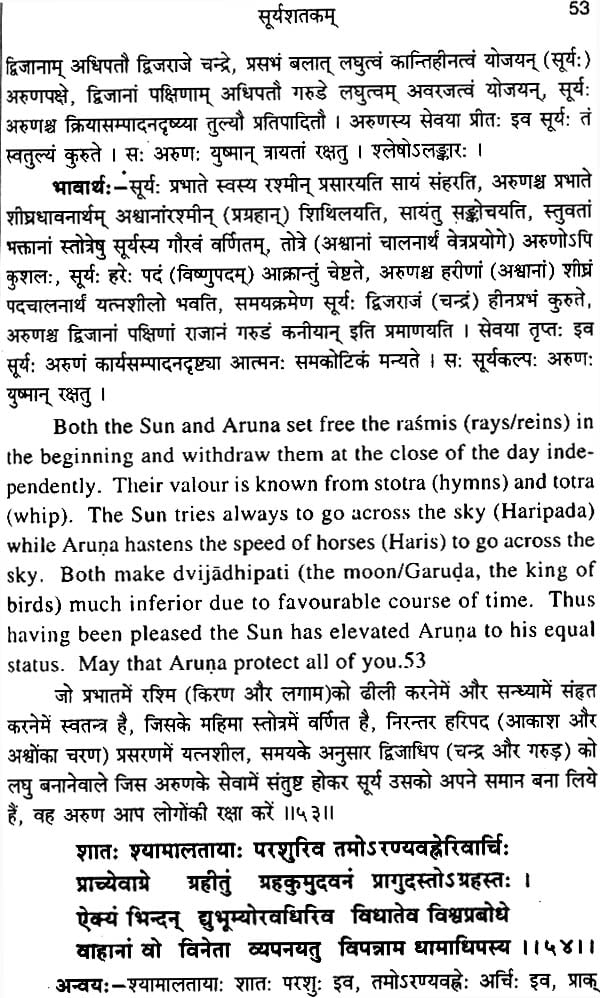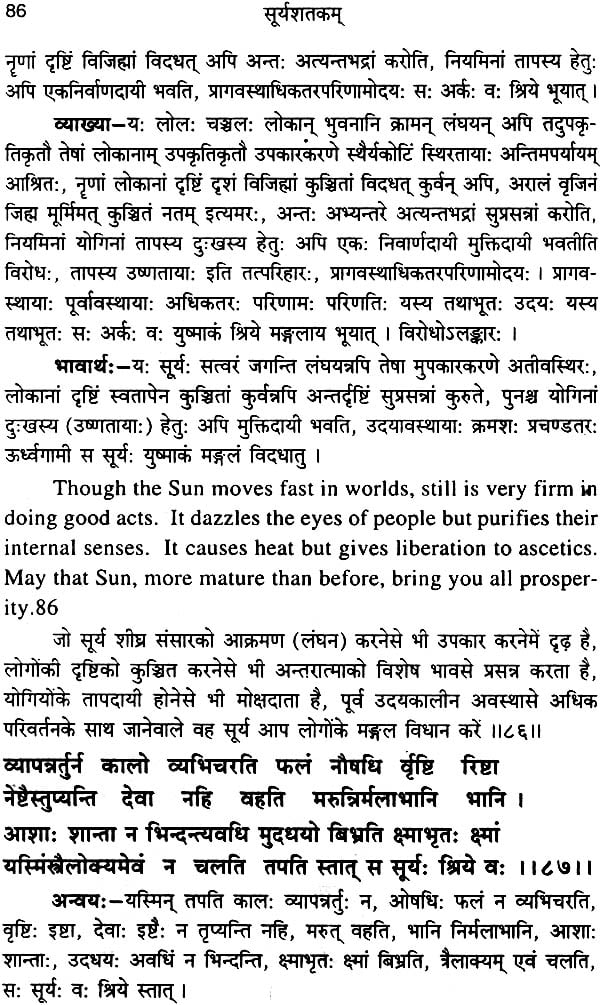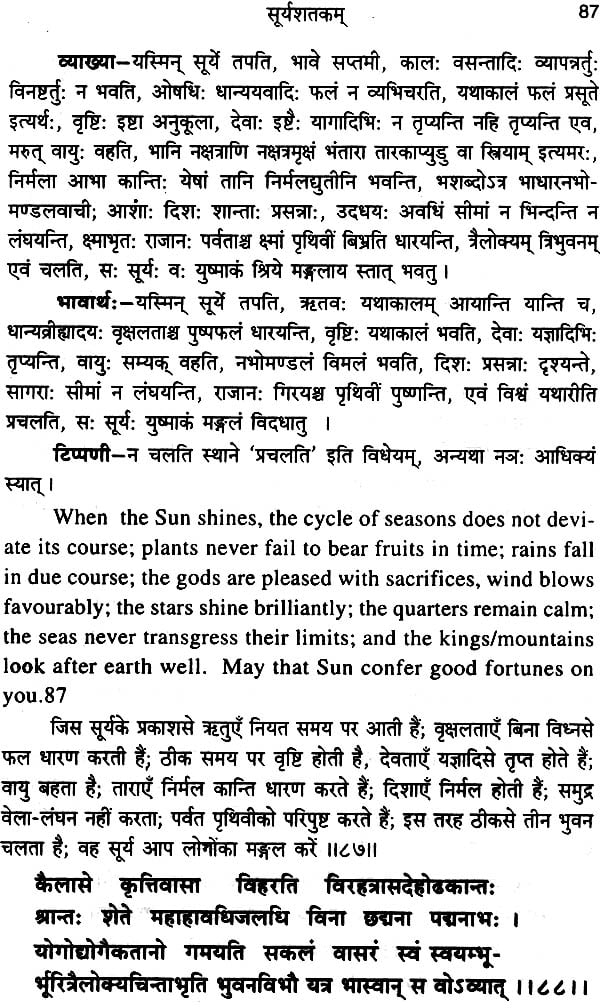
Suryasatakam of Mayur Bhatta (Sanskrit, Hindi, English, Commentary)
Book Specification
| Item Code: | IDI824 |
| Author: | Dr. Dinabandhu Kar |
| Publisher: | Chowkhamba Sanskrit Series Office |
| Language: | Sanskrit Text with English Translations |
| Edition: | 2004 |
| ISBN: | 9788170801338 |
| Pages: | 103 |
| Cover: | Paperback |
| Other Details | 8.4" X 5.2 |
| Weight | 140 gm |
Book Description
Adideva Namastubhyam prasida mama Bhaskara
Divakara namastubhyam prabhakara namo 'stu te II
Since time immemorial people all over the world have been worshipping the Sun-God. In the Vedic age in India when different elements of nature were deified and prayed as Gods and Goddesses, Sun had also occupied a prominent position. In many respects He is an embodiment of natural and super-natural powers. Philosophically analysed, the Sun-God has been identified with the Vital Principle in man and in cosmos.
In Mexican, Egyptian and Iranian civilizations the worship of the Sun-God is remarkable. Excavations at different places in Mexico, Egypt and Iran have revealed that people in very olden times were worshipping the Sun-God. Besides these areas, people in the whole of southern Europe, the East, North-East America and Australia were also worshipping the Sun in some form or other.
Sun in indeed the symbol of the Supreme. It is no doubt a resplendent manifestation of the Brahman. In sacerdotal Brahmanism the Asvamedha sacrifice gained importance in ancient India. The sole aim of this sacrifice was to gain victory over the foes in one hand and progeny and prosperity on the other. In this sacrifice the presiding deity is Suryadeva, the Sun-God. The horse which is sacrificed in this holy performance is the symbol of the Sun-God too.
The excavations at Moden-jo-daro and Harappa by Sir John Marshall brought out the true picture of the Indus valley civilization. There is clear cut evidence that the people of Indus valley civilization worshipped the Sun-God. According to Marshall, the wheel, circle with radiant rays, bird and the bull and the swastika mark were the symbols of the Sun. the seals and potteries that came to light bear such symbols of the Sun-God
In Japan the Sun-God is worshipped in the name of Nitten. In ancient Greece Apollo has been described as the Sun-God.











